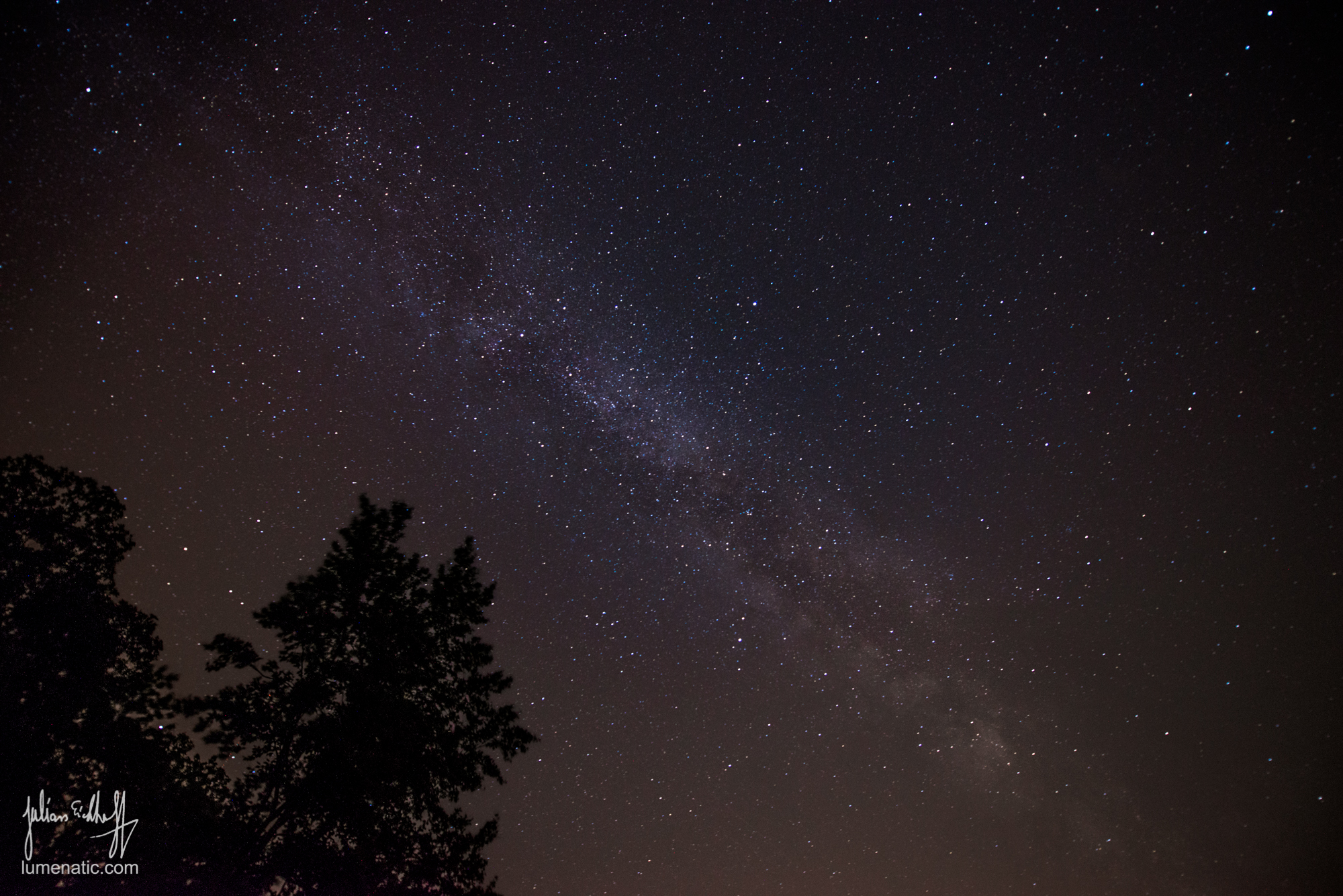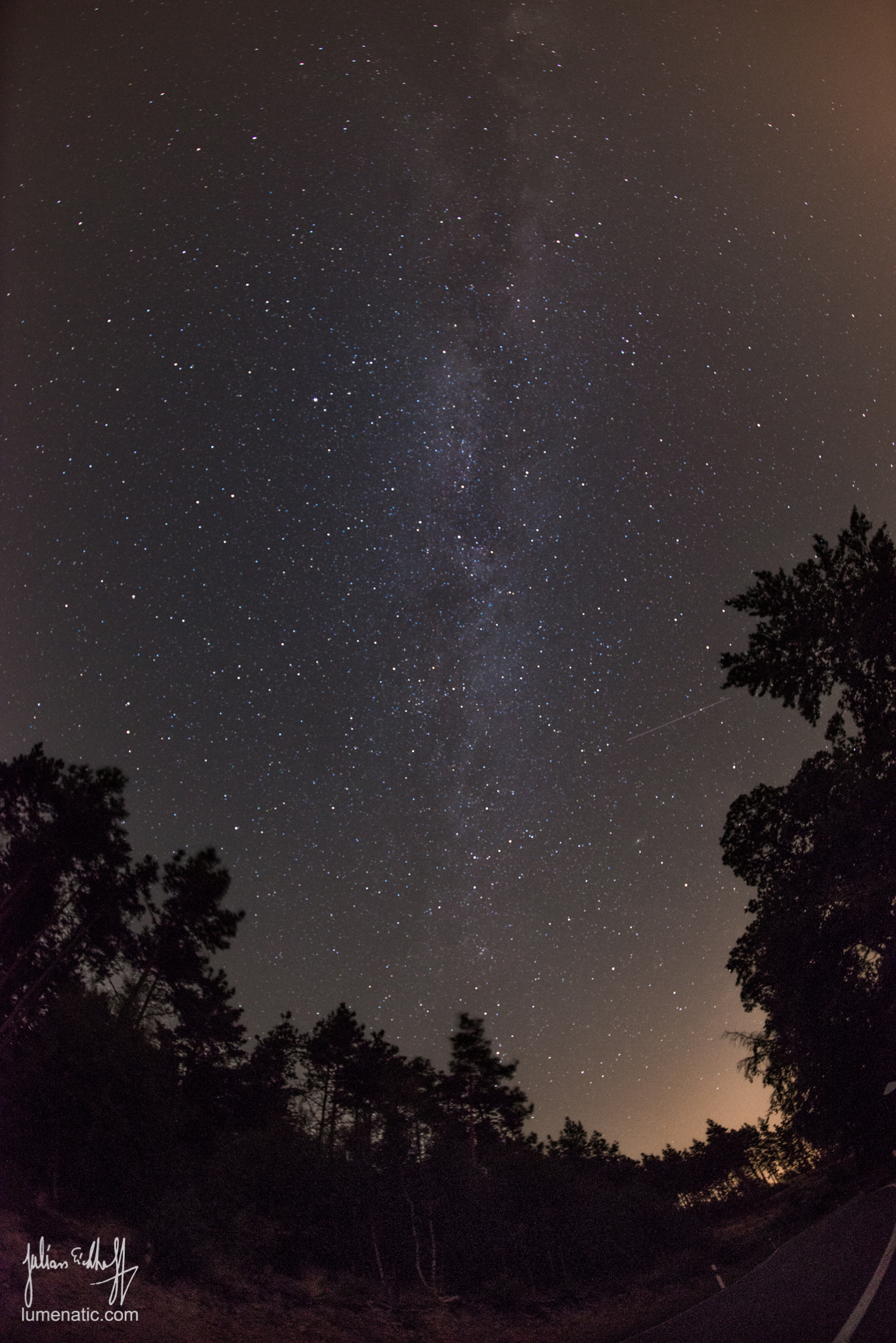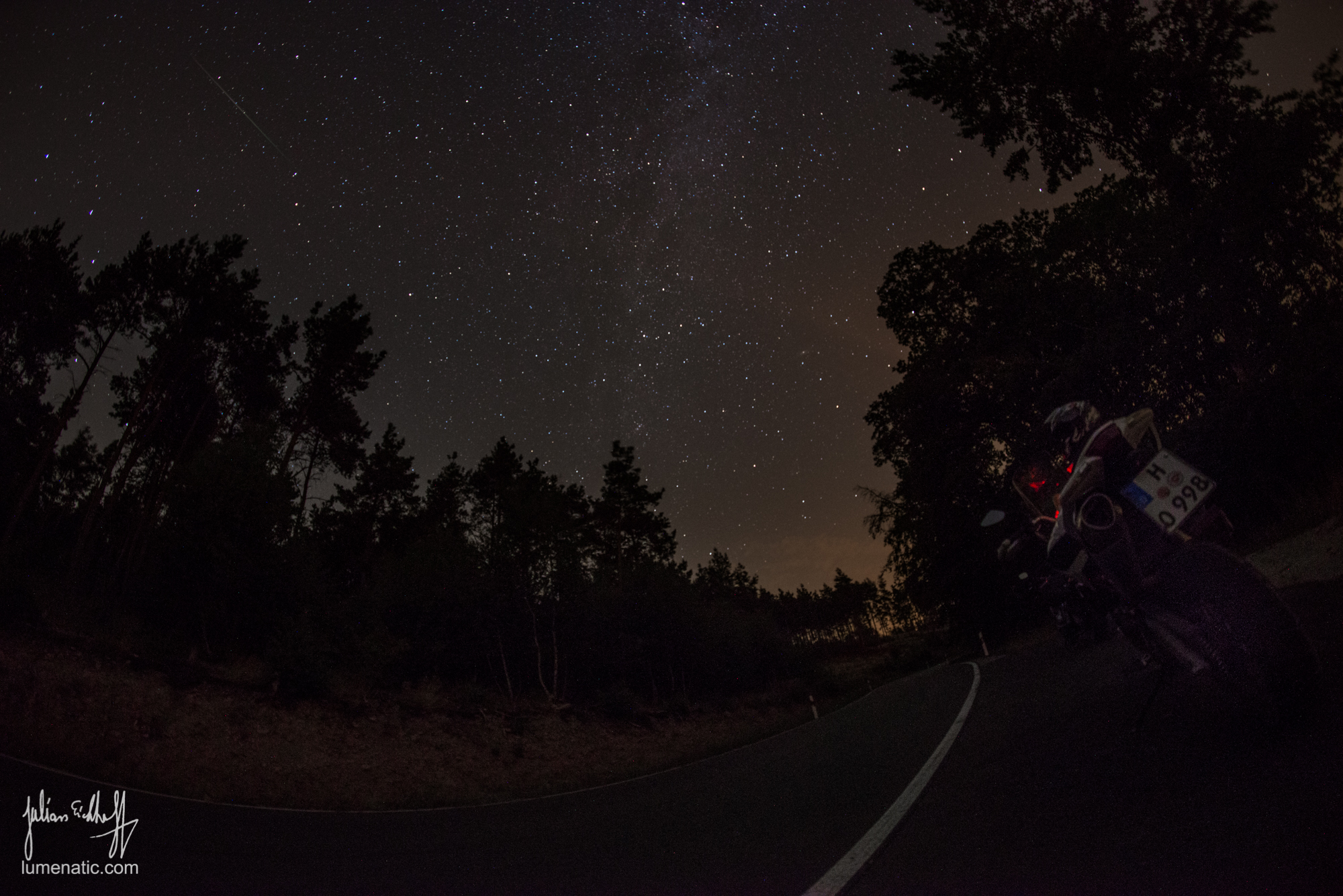
The earth is flying through the Perseid meteor swarm again and the night sky is showered with falling stars. Since the heavy light pollution in cities makes it next to impossible to observe this event, I chose to go to a more remote location. I made a two-day trip with my bike to the Harz in Thuringa. There at the Kyffhäuser pass, which is a place of pilgrimage for bikers due to the 36 curves which wind up the hill, I hoped to get a better look on this spectacular event. Mother nature was very kind to bless us with a nearly cloud-free sky and a 20°C+ warm summer night.
Photographing falling stars is a gamble, just like photographing lightning strikes. You are faced with a dilemma. Since you don’t know where the next falling star will fall, you have to point your camera at a random spot in the sky and wait, making one exposure after the other . If you choose a wide-angle lens, the chance is high that you will catch a falling star. But the falling star will be very small on the image. If you choose a longer focal length, your field of view is narrower, which rapidly decreases your chances that a falling star will occur in exactly that part of sky you are pointing your camera at.
I chose to take my Nikon D800, a MeFoto tripod and the Samyang 12 mm f2.8 lens (I wrote a review of that lens for NikonRumors a while ago, see here). We (my bike-buddy and I) set up “camp” at a small parking area aside the road which runs through the woods near the Kyffhäuser. I set the camera to 30s, f2.8 and ISO 1.250-2.000 (played with that a little). The camera was set to manual focus (well, the lens only offers manual anyway) with focus set to infinity. I pointed the camera towards the sky, triggered the exposure, moved the camera after a few exposures and fired wildly into the night sky.
Photography actually went a little in the background. The camera was set and after pressing the shutter you had 30 seconds to admire the stars before having to press the shutter again.
Enough talk, here are some images, scroll down for the description of the post processing… er… process.
I captured quite a few falling stars, but they are all small and a mere gimmick to the rest of the image. So I concentrated on working out the milky way. I found a helpful video on youtube by photographer Michael Shainblum where he describes his edit process in Lightroom for a milky way image. I applied heaps of changes to the images. Here are the most important ones:
- increased the exposure
- added contrast and clarity, adjusted the blacks
- moved the white balance so that the images come out more blu-ish
- decreased the orange saturation due to the light pollution
- applied several brushes to further dampen the light pollution
- also applied some radial filters to give the milky way more contrast and clarity.
Although we went to a very sparsely populated area of Germany there was still heavy light pollution shining over the horizon. The in-camera preview showed such intense orange light pollution, that I suspected Middle-Earth’s mount doom over the horizon. That is something one has to reduce in Lightroom with the above mentioned methods (watch the video, Michael explains the process very well, which is why I won’t repeat it here).
Bottom Line: I am very happy with the images, although they came out to be photos of the milky way as the main subject instead of the Perseid meteor shower. The bike trip was very refreshing and I enjoyed the warm night and watching the spectacular night sky. It was an enriching experience. Never forget to see the wonders of this world with your own eyes instead of always peeking through the viewfinder.







